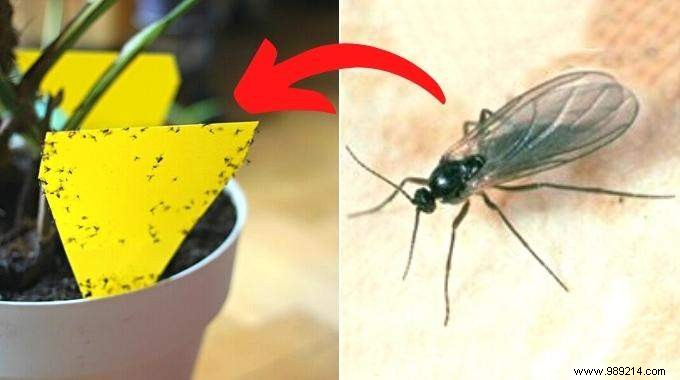
Today I show you how to get rid of fungus gnat (also called Sciaridae).
This fly, which loves to breed in the moist soil of potted plants, is a real pest.
Once established, it spawns larvae that can decimate your plants in no time!
Fortunately, a gardener gave me the 100% natural tricks to get rid of it.
With his methods, there is no need to run and buy expensive chemical insecticides.
The treatments are effective and have allowed me to permanently eradicate the problem.
Discover 11 natural tips and remedies to get rid of fungus gnats. Watch:
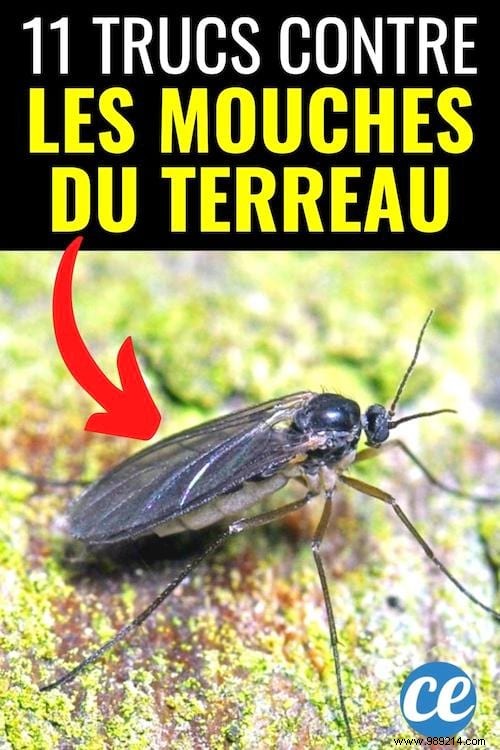
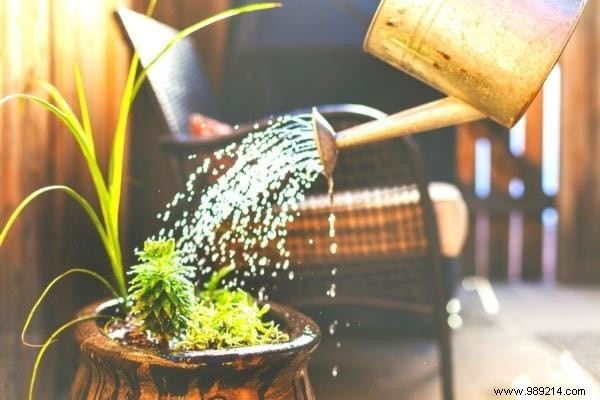
Before going on the offensive against these little pests, let's first see how not to attract them.
Know that fungus gnats love damp places.
So the first thing to do to not attract them is to control the amount of watering on your plants.
Especially in winter when it's cold, we always tend to water too much as the water evaporates less quickly.
In fact, always let the top few inches of the bottom of the container dry out before watering your houseplants.
The surface layer of the substrate must be completely dry before watering your vegetation again.
This prevents flies from choosing your plant as an ideal habitat.
This also disrupts their reproductive cycle and reduces the populations that have already settled there.
Finally, absolutely avoid having stagnant water in the cups.
If it's constantly wet, the fly's life cycle is never interrupted.
I also advise you to buy pots with holes in the bottom of the tank.
Otherwise, the soil remains permanently moist.
In conclusion, do not overwater to make the soil less welcoming.
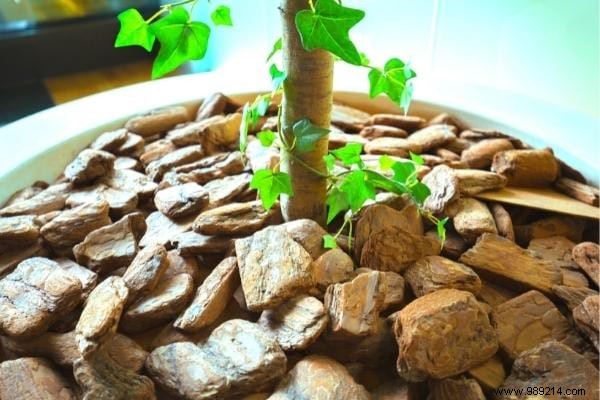
Fungus gnats like to lay their eggs directly in the ground.
We must therefore prevent them or at least slow down their reproduction.
To achieve this, lay down a small mulch with small pebbles or a little sand.
This way you protect the soil and it is more difficult for flies to leave their eggs there.
To make the mulch, I was even advised to put diatomaceous earth.
Fine and sharp, it gives very good results.
Sprinkle the diatomaceous earth on the surface of the pots and mixed with the substrate.
This earth contains micro-particles of silicon which cause lesions in the digestive tract of sciarids.
Diatomaceous earth can kill a colony of larvae in no time.
Do you know what tulle is? It's a sort of spool of flexible fabric.
What does this have to do with fungus gnat control?
Well look at this little trick from grandma.
Tie a piece of tulle over your flower pots so that it covers all the soil.
Once in place, the adult flies are trapped under the tulle.
They can no longer feed or reproduce and after a while you are totally rid of it.
The first technique I gave you was not to attract them.
There, it is quite the opposite. They are baited to better eliminate them.
For this, put water and honey in a small cup.
Place it near the plant and drowning is guaranteed.
Flies can't resist the sweet taste of our mix; except that when he tastes this nectar, he drowns!
And then, I couldn't talk about fly traps without telling you about the very classic yellow trap.
You know, it's the duct tape that we used to see hanging in our grandparents' living room!
Well, not very aesthetic, that's for sure; but terribly effective in trapping flies.
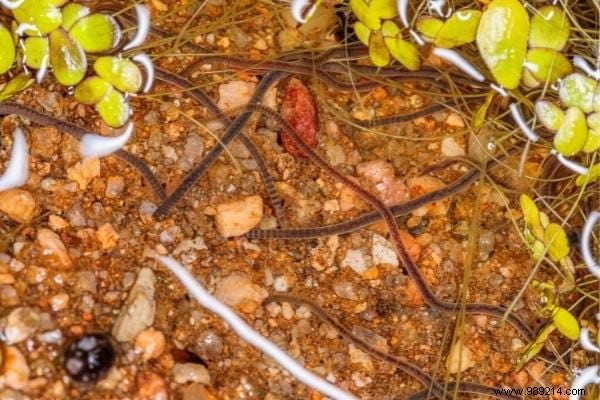
Parasitic nematodes? Quesako?
They are natural predators that kill plant pests.
They are therefore a valuable ally for gardeners who want to control pests biologically.
We buy it in the form of a sachet, dilute it in water and evenly water the earth.
The nematodes will develop and hunt for larvae to parasitize them.
Allow 1 week 10 days for maximum effectiveness.
Attention, this method is effective in case of infection, not in a preventive way.
Indeed, nematodes need to parasitize a host; otherwise they die.
Another natural method to scare away fungus gnats is to use essential oils.
Cinnamon and rose geranium oils are perfect for this.
In your watering can, pour 3 drops of the 2 essential oils for 1 L of water.
Water your plants as usual to keep flies away.
Another possibility is to use lemongrass essential oil.
This smell is very bothersome to fungus gnats.
To diffuse the scent of this oil, nothing could be simpler.
Soak cotton balls in this liquid and place them on the surface of the potting soil.
Finally, be aware that the harsh smell of black tea is also hated by these flies.
They cannot lay eggs in an environment giving off this type of odor.
So, might as well take advantage of it.
Simply steep the tea in water and water your plants 1 in 2 times with it.
The invaders flee as quickly as they came.
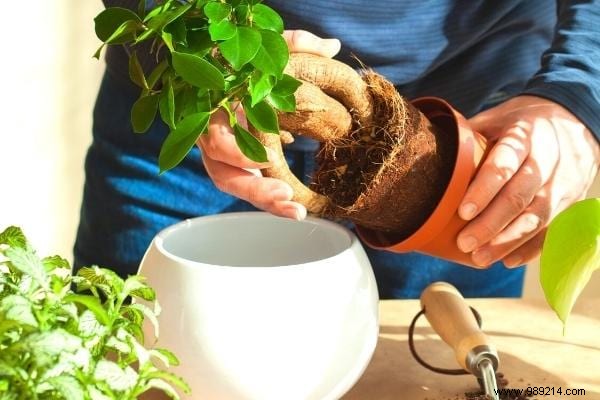
If you notice that the surface layer of soil is moldy, remove it.
Very often, larvae are present under this layer.
If this is the case and if you can, then proceed to a total repotting of the plant.
Also rinse the roots; it completely frees the flower from those pesky hosts.
Ah yes; once repotted, do not place the flowerpot next to other plants.
Flies could move easily from one plant to another if other bins were infested.
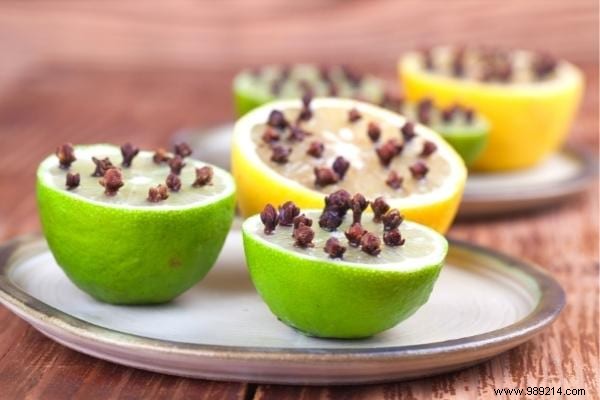
If you didn't know, flies hate the sour smell of lemon.
If you also add cloves to it, you are sure that no flies will approach your plants.
To create this homemade repellent, just stick a few cloves in a halved lemon.
Place the half-lemon directly in the soil:no more flies attack your plants.
Black soap is a handy multipurpose product.
Best known for its cleansing properties, black soap also serves as a repellent.
In the tank of a sprayer, pour 30 g of black soap diluted in 1L of water.
After watering your plant, spray the black soap preparation directly on the foliage and the soil.
I know what you are going to tell me. The black soap will attack the plant!?
Well, not at all.
This product is harmless to plants , but extremely unpleasant for fungus gnats and their larvae.

If the infestation of fungus gnats and their larvae is heavy, you can use neem oil.
It is a totally natural product that has been well known in India for a long time.
This oil comes from the kernels of the neem tree and produces what is called azadirachtin.
This active ingredient impacts the nervous system of the larvae and prevents them from molting.
The use is quite simple to implement.
Let the soil dry out (the plant must be thirsty).
Mix 1L of water and 20ml of neem oil.
Water your plant thoroughly with the solution and let it dry again.
Repeat exactly the same thing 4 days later.

As their name suggests, fungus gnats feed, live, and breed in soil.
The problem is that the larvae are often already present in store-bought soil!
Low-end potting soils are particularly prone to infection.
They are never truly sterile.
It is therefore advisable to buy a carefully packaged quality potting soil.
The fungus fly does not measure more than 4 mm.
You can recognize it by its fairly slender black body, but above all because of its long legs.
These flies are found at the base of flower pots.
This is where they find what they love:substrate rich in humus, organic matter, humidity...
A perfect place for their reproduction.
They lay larvae there that are between 5 and 12 mm long.
These larvae are like small worms:they have a black head and their body is whitish, almost transparent.
Fungus gnats don't live long, no more than a week!
Their reproduction is therefore a key factor for the survival of the species.
They lay between 50 and 300 eggs just after they are born!
These larvae have favorite targets:young plants in pots or grown in greenhouses.
The fly itself is not necessarily dangerous for plants.
These are the larvae to watch out for.
Because once they have engulfed the organic matter in the soil, the larvae attack the root hairs of the roots.
Deprived of its hairs, the plant can no longer feed itself, withers and then dies.
Fungus gnats and their larvae also create another plant hazard.
Their attacks cause some kind of wounds.
And these wounds are the entry point for bacteria and fungi that make the plant sick.
Plants that need moisture are particularly affected by fungus gnats.
We are talking about orchids, violets and all plants that appreciate humidity.